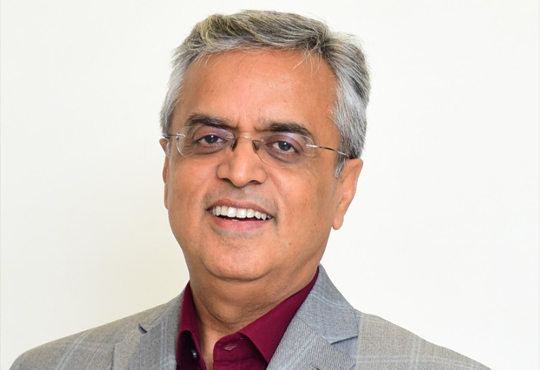TechMindfulness: A Journey to Mental Resilience in the Digital Age
Sanjay Sehgal, Chairman & CEO, MSys Technologies | Monday, 12 February 2024, 12:23 IST
 In the modern day, mental health has emerged as a critical and pervasive concern, impacting individuals across all generations alike. Since it is less tangible than physical health, it is more vulnerable to stigma and neglect. However, neglecting mental health is something humans can’t afford as it plays a major role in their overall well-being and influences their thoughts, feelings, and coping mechanisms.
In the modern day, mental health has emerged as a critical and pervasive concern, impacting individuals across all generations alike. Since it is less tangible than physical health, it is more vulnerable to stigma and neglect. However, neglecting mental health is something humans can’t afford as it plays a major role in their overall well-being and influences their thoughts, feelings, and coping mechanisms.
Well, the good news is society has evolved to a certain level, where it values a healthy mind as much as a healthy body, with an increasing number of people widely accepting the conversation around mental health with an open mind. Many thanks to tech leaders of the 21st century.
With their most recent inventions, they are actively supporting mental health by providing easily available tools like wearables, online therapy platforms, mentorship and mental health apps. By providing users with individualized support, mood monitoring, and coping strategies, these technologies improve emotional health and self-awareness.
Sanjay Sehgal, the CEO and Chairman of MSys Technologies is one such tech-savvy person who is connecting us to discuss how technology enables people to take proactive control of their mental health, encouraging a more convenient and inclusive approach to well-being in today's fast-paced world. Let's peruse.
How can technology be leveraged to address mental health challenges?
In recent years, the intersection of technology and mental health has emerged as a promising avenue for addressing the pervasive challenges individuals face in their mental well-being. Recognizing the profound impact of modern lifestyles and the evolving nature of societal stressors, businesses are increasingly leveraging technology to offer innovative solutions. From mental health apps to telehealth services and artificial intelligence-driven interventions, technology provides a diverse toolkit for enhancing mental health support. Unfortunately, during the global pandemic spanning two and a half years, reliance on screens for work and education seemed like a necessary solution for staying connected. This shift has resulted in severe mental health issues, particularly for children exclusively engaged in online learning. These individuals now lag behind peers who maintained in-person interactions with teachers and fellow students. Though technology has presented some implications, it has contributed significantly to addressing mental health challenges, creating supportive environments for individuals to prioritize and maintain their mental well-being. Technology not only diagnoses mental health problems but also offers solutions through advancements in the medical technology industry and accessible wellness applications. At a non-medical level, wellness apps encompassing practices such as yoga, meditation, breathing exercises, mindfulness, and Heartfulness practices contribute to comprehensive mental well-being.
What strategies can organizations implement to mitigate negative social media influences and promote healthier online interactions?
One noteworthy finding is the influence of technology on the promotion of undesirable behaviors, a phenomenon that is more accurately attributed to users' wrong behavior than to technology in particular. Rather than blaming technology alone, it would be more accurate to blame people for their careless use of it. To tackle this problem, companies must provide safe digital spaces. Corporations must assume accountability, especially in situations where people disclose personal struggles in real or virtual environments. Encouraging people to talk openly and safely about mental health issues online is essential. Whether through in-person or virtual encounters, organizations should be alert to take proactive measures to detect and resolve incidents of trolling and harassment. Regardless of the media, organizations must report troublemakers. Online interactions also require vigilance, so keeping an eye out and taking prompt, firm action against individuals who continue to engage in disruptive behavior are essential. Organizations need to take proactive measures to create a safe and courteous digital environment to prevent workplace harassment and cyberbullying, as it is not just a problem in traditional settings.
How can technology best support and augment parenting practices in the digital age?
I ardently advocate for preserving the fundamental bonds within families, particularly between parents, grandparents, and their progeny. This realm, I believe, should experience minimal intervention from technology. However, I recognize instances where technology has proven beneficial in enhancing parenting practices. For instance, during my child's formative years in the United States, using a monitor facilitated our vigilance while attending to household chores, ensuring our child's safety and immediate attention if needed. Technology played a supportive role, aiding us in becoming more attentive and responsive parents. Presently, during my visits to India, while my adult son studies abroad, technology serves as a crucial bridge, enabling consistent communication and connection across the globe. This application of technology, facilitating parental involvement even at a distance, aligns with its constructive potential. Nevertheless, I contend that technology should not supplant the inherent responsibilities of parenthood. I firmly believe that an overreliance on technology in parenting could lead to societal challenges. The traditional role of grandparents, integral to our upbringing, has diminished in contemporary times. While technology has proven invaluable, especially during the COVID era, allowing for regular long-distance communication, it remains imperative to emphasize the irreplaceable value of spending quality time with loved ones. In essence, while technology can facilitate connectivity, it cannot substitute the profound impact of personal interactions and shared experiences.
What trends or shifts do you anticipate in the future landscape of software development?
Certainly, the discourse around artificial intelligence (AI) is pervasive, but I find more significance in imbuing elements of human intelligence into various facets of technology. This involves the integration of self-learning capabilities, a characteristic akin to human intelligence. We are witnessing a proliferation of systems and devices that exhibit self-awareness and self-learning, mirroring the processes inherent in human intelligence. This paradigm shift is contingent on robust real-time data processing, as observed in human cognition, where inputs from various senses contribute to our ability to learn and adapt. These two converging trends, real-time data processing and the development of self-learning, self-aware systems, signify the future landscape of software. These innovations are not confined to theoretical realms but are actively contributing to advancements in diverse fields, such as medicine and finance. The integration of such technologies holds the promise of enhancing and simplifying our lives over the next two decades. However, as we embark on this transformative journey, it is imperative to acknowledge the potential risks associated with self-learning and self-aware AI systems. There is a growing awareness among nations about the necessity for robust laws governing the use of artificial intelligence to prevent unintended consequences, including self-destruction. Striking a delicate balance is crucial, as these technologies hold the power to either enhance our lives or pose threats to our well-being.
Kindly suggest some advanced technical technological tools for mental health awareness or well-being.
A plethora of applications are readily available in the market, offering a myriad of features for users seeking solutions in the realm of mental well-being. I find the Headspace app to be notably advanced, providing a diverse range of practices. However, it's crucial to acknowledge a common challenge associated with these apps—their efficacy is contingent on individual usage. On a personal note, I am a staunch advocate of Heartfulness practices, and we offer a complimentary Heartfulness app. This platform offers an array of practices designed to guide users in managing anger, practicing detox routines, and alleviating stress and anxiety. Notably, all practices within the Heartfulness app are accessible at no cost, emphasizing our commitment to promoting mental well-being. Additionally, I have made strategic investments in apps available in the market, accessible globally. The ubiquity of smartphones facilitates easy access to these tools, making it seamless for individuals worldwide to incorporate these apps into their daily routines. The widespread availability of such applications underscores their potential to assist users in learning and implementing practices that contribute to maintaining a healthier state of mind and body.




